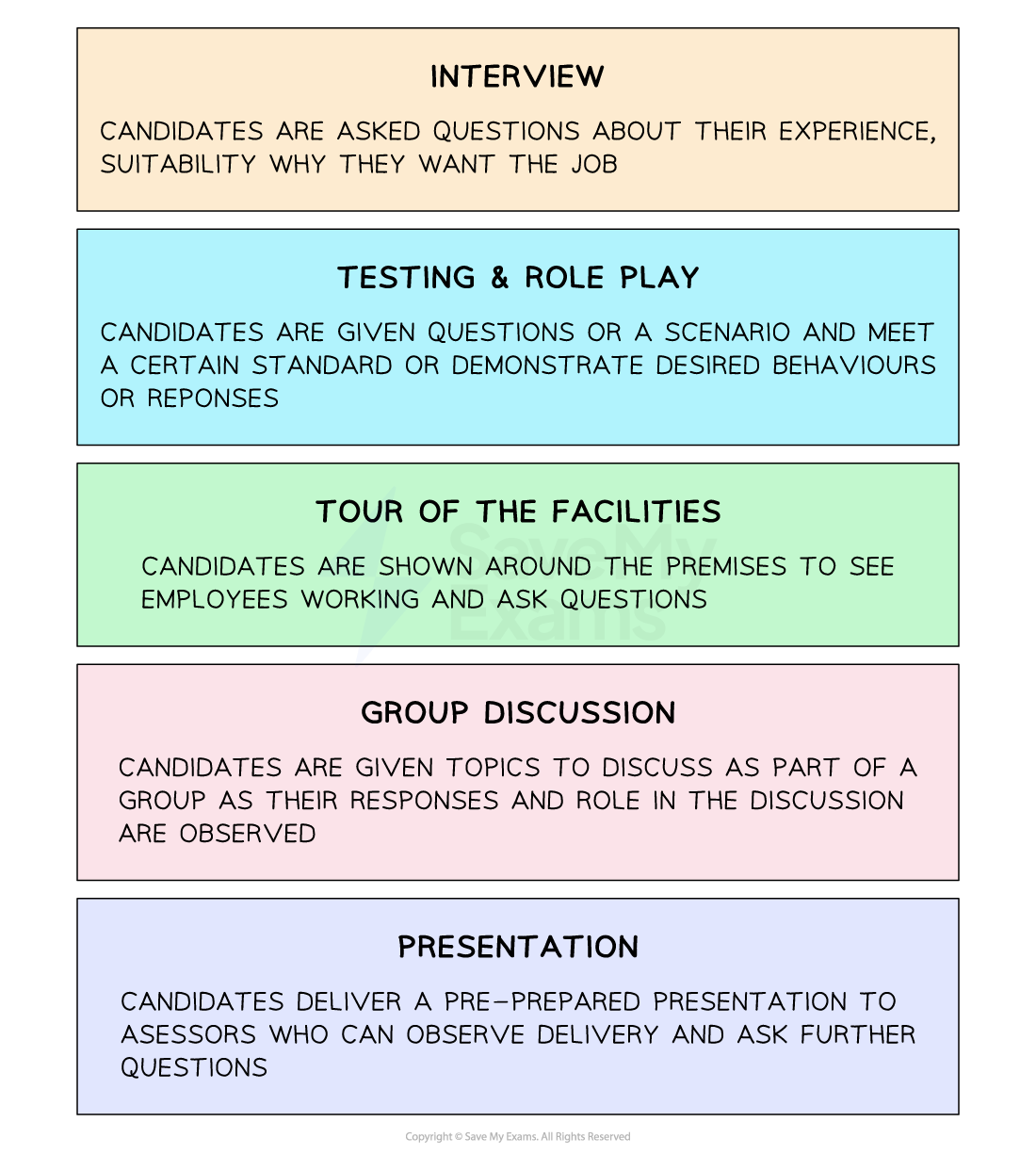- The recruitment process involves identifying job roles that are needed and seeking people to fill vacancies
Recruitment Documentation
- Businesses use a range of documents in the recruitment process

Documents used in the recruitment process
- Before a business starts to look for new employees it writes a person specification and a job description
- A person specification details the essential and desirable characteristics of the person suitable for the job including
- Qualifications
- Experience
- Skills such as the ability to drive or IT capabilities
- Personal characteristics and attributes
- A job description details the features of the job including
- Duties
- Hours and location of the job
- Managerial or supervisory responsibilities
- Pay and conditions
- Once the job is advertised the business may accept applications from candidates via Curriculum Vitae (CV) or an application form
Comparing Application Forms and CVs
|
Benefits of an Application Form
|
Benefits of a CV
|
- All applicants provide identical information in the same format so they are easy to compare
|
- More applicants may apply because it is easier for candidates to prepare and adapt a standard CV
|
Drawbacks of an Application Form
|
Drawbacks of a CV |
- Limited information can be expressed by candidates so key desirable attributes may not be identified
|
- Comparing different formats and content of CVs can take more time and lengthen the recruitment process
|
Methods of Recruitment
- Recruitment can be internal or external and will depend on the needs of the business
Internal and External Recruitment
|
Method of Recruitment
|
Explanation
|
Benefits
|
Drawbacks
|
|
Internal
|
- Where a person who already works for a business is appointed to a job role
- This is commonly achieved through promotion or reassignment
|
- The member of staff is already familiar with business culture and working practices
- The business is aware of the employee's strengths and weaknesses
- There is no need for induction training
- Expensive advertising is not needed
- Employees can be ready to start their new role immediately
|
- When an employee moves to a new role their old job needs to be filled
- There may be resentment amongst employees who are overlooked
|
|
External
|
- Where a business hires an employee from outside of the business
|
- A higher number of applicants may be attracted
- New recruits are usually highly motivated and keen to impress
- New ideas and experience are brought into the business
|
- New employees may need support from colleagues and induction training which slows down productivity
- Advertising for external staff can be expensive and take a long time
- A candidate who performs well at interview may be unsuitable for the job when they start work
|
- Once candidates have submitted their applications and the business has shortlisted suitable candidates, a variety of methods can be used to select the right worker for the job role

Common selection methods used to recruit employees
- If a business needs to recruit quickly or if it is struggling to find the right employee it may use a recruitment agency to carry out the advertising and recruitment process on their behalf
- New employees may be found quickly through a recruitment agency which has potential candidates already enrolled
- It can be expensive as businesses have to pay a fee for these services



